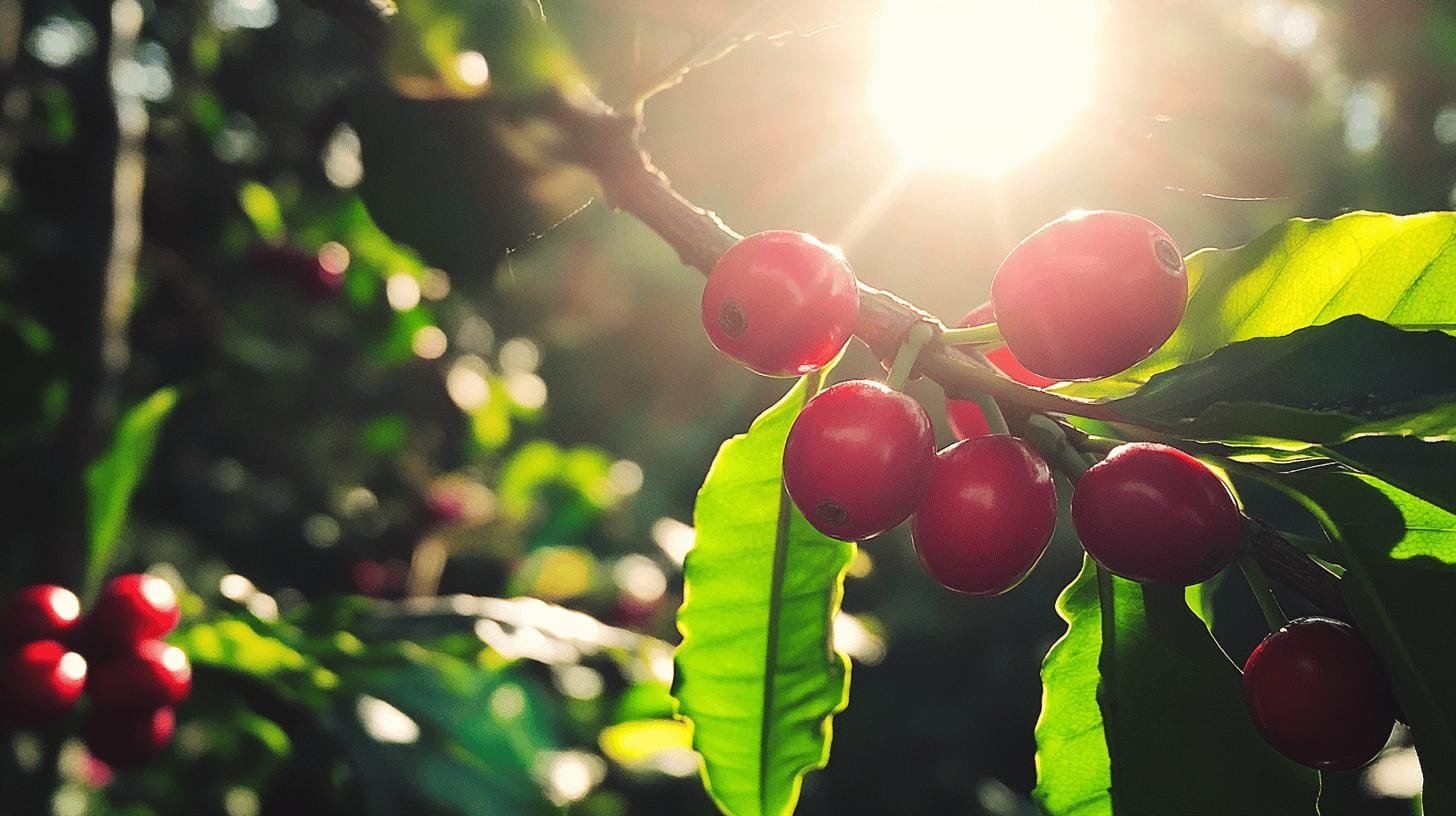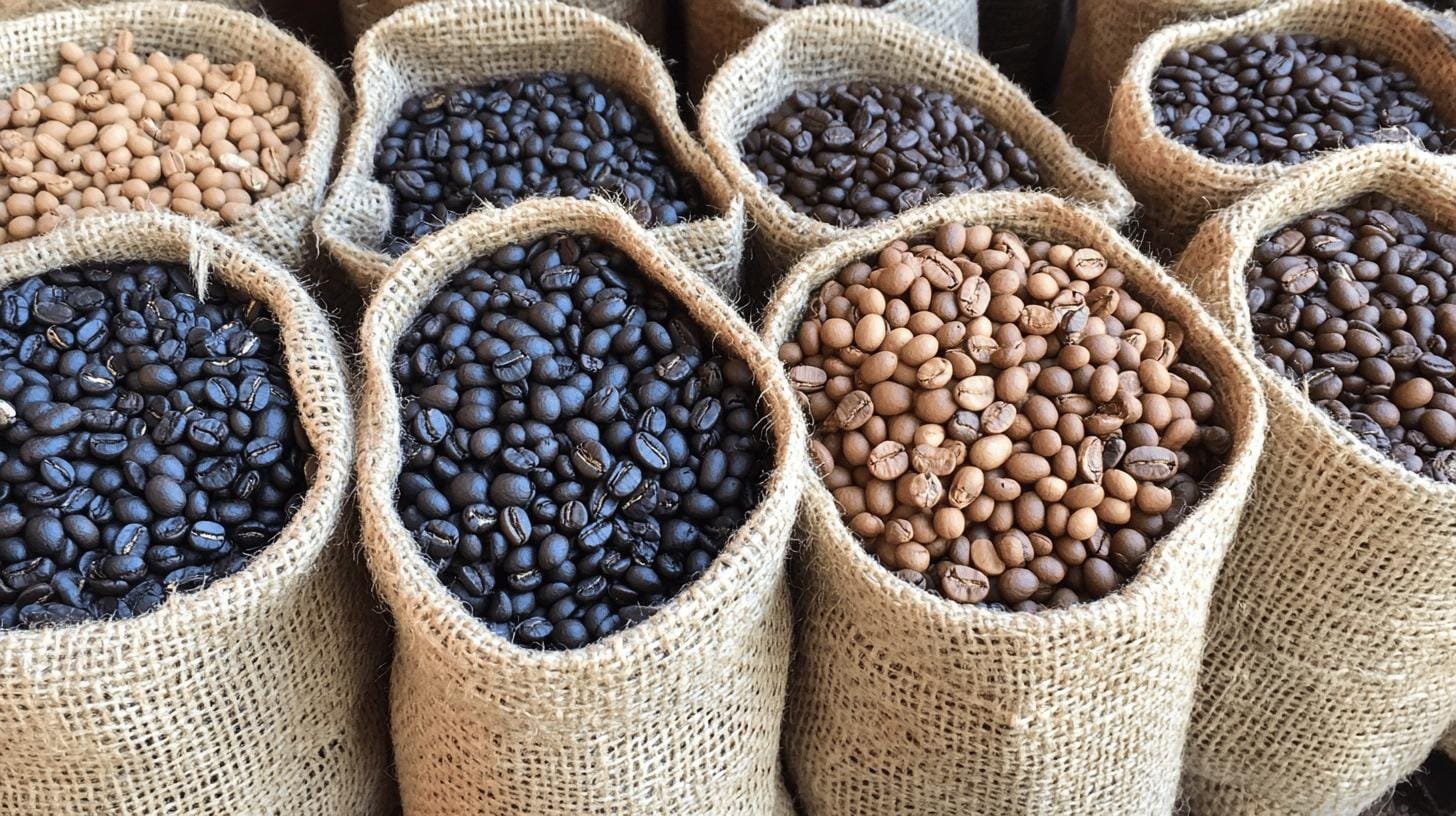
Artisanal Rituals for a Memorable Customer Experience
How can brands create a more balanced and memorable customer experience by blending artisanal product quality with thoughtful everyday rituals that keep people coming back?

Can a cup of coffee burst with the freshness of berries or the zest of citrus? Fruity coffee undertones might sound surprising, but they’re a reality waiting to be explored by coffee aficionados. These vibrant flavors transform a simple morning cup into a complex sensory experience. Understanding the unique factors that contribute to these fruity notes – from the origin of the bean to the roasting methods – can elevate your coffee journey. Dive into this article to uncover the secrets behind fruity coffee undertones and learn how to savor every nuanced sip.
Fruity coffee undertones refer to the natural flavors in some coffee beans, reminiscent of various fruits. These flavors can range from berries and citrus to tropical notes. The term “fruity” on coffee bags signifies these natural characteristics, not artificial additives. These flavors are often appreciated for their complexity and vibrant taste, offering a unique experience compared to traditional coffee flavors.

The origin of coffee beans plays a crucial role in their flavor profile, particularly their fruity undertones. Coffee plant varieties differ in their flavor potential. Arabica beans, for example, are often associated with more delicate and complex flavors, including fruity notes. Environmental factors such as soil composition, altitude, and climate significantly impact the coffee’s taste.
High-altitude regions, like parts of Ethiopia and Kenya, allow beans to mature more slowly. This slower maturation process results in more intricate flavor profiles, with a tendency toward vibrant fruity notes.
The method of processing coffee dramatically affects its final flavor and the presence of fruity undertones. Natural or dry processing allows the beans to dry inside the fruit, intensifying sweet and fruity flavors. This often results in bold, fruit-forward coffees. Washed or wet processing, on the other hand, cleans the beans, highlighting a cleaner taste with subtle fruit notes. Honey processing, a middle ground, balances fruitiness while maintaining clarity.
Roasting levels are pivotal in shaping coffee’s flavor complexity. Light roasts preserve the bean’s original flavors, maintaining acidity and fruity notes. These roasts are often preferred for showcasing fruit-forward profiles. Medium roasts balance the bean’s natural flavors with enhanced sweetness and body. As the roast darkens, the prominence of fruity notes diminishes, with caramelization and smoky flavors taking precedence. The choice of roast allows coffee enthusiasts to tailor the flavor experience, emphasizing or softening fruity coffee undertones.
Tasting notes are crucial for understanding and appreciating coffee’s complex flavors. Expert tasters sample hundreds of coffees to pinpoint specific flavors, creating a guide that helps consumers identify and enjoy these nuances. Tasting notes, especially those highlighting fruity undertones, provide insights into the coffee’s origin, processing, and roasting methods.
To identify specific notes in coffee, start with a method called “coffee cupping.” This involves sniffing the dry grounds, then slurping the brewed coffee to aerate it, allowing the flavors to coat the palate.
A coffee flavor wheel is an essential tool for identifying various tasting notes, including fruity undertones. Begin by tasting the coffee and noting the broad flavor category it falls into, such as fruity, floral, or nutty. Then, narrow down to specific fruit types by referencing the wheel. This systematic approach aids in recognizing and articulating the distinct fruity notes present in the coffee.
Common fruity flavors in coffee include:
Pairing coffee with complementary foods can elevate the tasting experience. Fruity coffees pair well with foods that either contrast or complement their flavors. For instance, a coffee with berry notes can be paired with dark chocolate to enhance the fruitiness. Meanwhile, citrus notes might be balanced with a buttery pastry. This practice accentuates fruity coffee undertones and enriches the overall tasting experience.

For those seeking vibrant fruity coffee undertones in their coffee, beans from specific regions such as Ethiopia and Kenya are renowned for their distinctive profiles. Ethiopian coffee varieties like Yirgacheffe and Sidamo are celebrated for their pronounced fruity notes, often exhibiting flavors of berry, citrus, and tropical fruits. Similarly, Kenyan AA beans are known for their bold fruit flavors and bright acidity, making them a favorite among coffee connoisseurs. These regions’ unique climates and high altitudes contribute to the slow maturation of beans, resulting in a complex and flavorful cup.
High-quality fruity coffee beans are usually found in specialty coffee shops or reputable online sources. These venues often offer single-origin coffees, allowing you to experience the unique characteristics of each region. Specialty shops and online retailers often provide comprehensive information about the beans’ origins, processing methods, and flavor profiles, helping you make an informed choice.
Brewing techniques play an essential role in accentuating the fruity undertones of coffee. The brewing method can significantly impact how well these vibrant flavors are extracted and perceived.
Pour-over methods like V60 and Chemex are particularly effective for highlighting nuanced flavors, including fruity coffee undertones. These techniques allow for precise control over brewing variables such as water flow and saturation time, which can be tailored to enhance the coffee’s natural flavor profile. The V60, with its conical shape and spiral ridges, offers balanced extraction. The Chemex, with its thicker filter, provides a cleaner cup, preserving the coffee’s intrinsic fruitiness.
Cold brew and iced coffee methods also offer a unique approach to enhancing fruity undertones. The slow extraction process of cold brewing, typically involving steeping coarsely ground coffee in cold water for an extended period, preserves and amplifies the coffee’s fruity notes while reducing acidity.
To optimize brewing and extract fruity flavors, consider these tips:
The interplay between water temperature, brewing time, and grind size is crucial for extracting vibrant flavors. Properly optimizing these elements allows for a refined and enjoyable coffee experience, highlighting the best that fruity coffee beans have to offer.
Understanding fruity coffee undertones involves recognizing the impact of bean origin, processing methods, and roasting styles.
To identify fruity notes, using tasting tools like the flavor wheel and engaging in proper tasting techniques are essential.
By focusing on fruity coffee undertones, coffee aficionados can deepen their appreciation and enjoyment of their favorite brew.
Fruity coffee means the beans exhibit natural flavors resembling fruit, such as berries or citrus, due to factors like origin, processing, and roasting methods.
To avoid fruity coffee, select beans with nutty or chocolatey tasting notes and opt for medium to dark roasts.
To extract fruity notes, use light roasted beans, and consider brewing methods like pour-over or cold brew to enhance these flavors.
The best fruity coffee undertones include berry, citrus, and tropical fruit notes, frequently found in Ethiopian and Kenyan coffees.
Fruity coffee exhibits flavors like berries or citrus, while nutty coffee has flavors resembling nuts such as almonds or hazelnuts. This difference is influenced by bean origin and processing methods.

How can brands create a more balanced and memorable customer experience by blending artisanal product quality with thoughtful everyday rituals that keep people coming back?

Independent coffee shops have always been about more than caffeine—they’re hubs of creativity, connection, and care. As café culture continues to evolve, new trends are

Introduction Independent cafes win when they feel like the neighborhood’s living room and operate with the discipline of a great kitchen. Below is a quick

Discover how top specialty coffee brands create lasting loyalty through storytelling, sourcing, and community connection. Real tips from 6 industry experts.

Discover the ultimate showdown between two beloved coffee brewing methods: the French press and Chemex. Explore how each technique caters to distinct palates, with the French press delivering bold flavors and the Chemex presenting a bright, clean taste.

Unlock the secrets to brewing the perfect cup of coffee with our comprehensive guide on using a coffee scale. Discover how precise measurements enhance flavor and consistency while eliminating bitterness.

Discover how water temperature plays a vital role in brewing the perfect cup of coffee. This article delves into the ideal temperature range of 195°F to 205°F for optimal flavor extraction, enhancing the enjoyment of high-quality beans.

Discover the world of curated specialty coffee bundles, perfect for enthusiasts seeking quality and craftsmanship. This article explores the benefits of ethically sourced, small-batch beans from brands like Equipoise Coffee, offering diverse flavor profiles that elevate your brewing experience.

Discover the art of manual brewing to elevate your coffee experience! This article explores various techniques like pour-over, French press, and AeroPress, revealing how they enhance flavor and your connection to every cup.